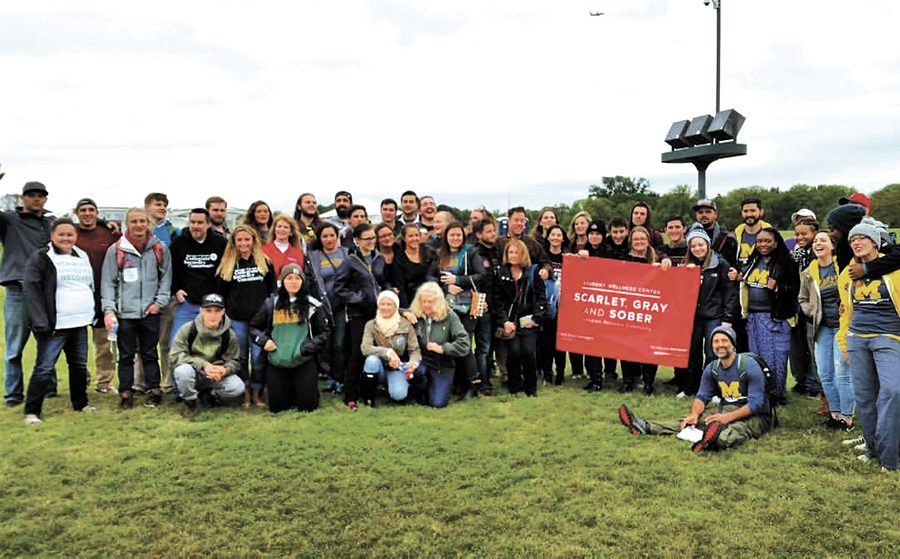On campus recovery program challenges stigma
The UVM Catamount Recovery Program poses for a photo with recovery programs from other schools across the country at UNITE to Face Addiction Oct. 5, 2015. CRP began in 2010 and is located in Living Well on the first floor of the David Center.
April 25, 2019
The Catamount Recovery Program works to redefine the typical college experience by helping those in recovery and promoting a substance-free life on campus.
The Catamount Recovery Program began in 2010 and is located in Living Well on the first floor of the Davis Center, The program helps those in the UVM community who are in recovery from substance use disorder, CRP Director Amy Boyd Austin said.
“My original conception of the Catamount Recovery Program was about creating a safe space for students in recovery from substance use disorders,” Austin said. ”I think that the college campus is a pretty hostile environment.”
Austin said a challenge that CRP has been dealing with is breaking through the stigmas and preconceived notions while helping people recognize biases about recovery.
“There’s an expectation that you party in college and that getting into trouble, missing class, being hungover,” she said. “All those consequences are thought of as rites of passage as opposed to indicators that maybe it’s a problem.
“And it’s not a problem for everybody.”
The Catamount Recovery Program is meant to show that a complete college experience doesn’t need to be include substance use, CRP Coordinator Joy Solomon ’18 said.
Substance abuse affects many people and is incredibly prevalent among college students, Solomon said.
“It’s like 9.3% of Americans struggle with substance use disorder,” she said. “Eighty percent of that is between ages 18 and 25.
“We’re looking at at least 6% or 7% of our campus.”
There are around 30 to 40 students currently in the program, which is far less than the projected number of students on campus struggling with substance use, Solomon said.
A student in CRP who wishes to remain anonymous said she wants more awareness of the program.
She only found out about CRP after she left school to get sober, she said.
“There’s so many people who don’t know the first steps of getting help,” she said. “If that was more well-known, we would have a lot more people who chose to not always participate in substances.”
Visibility on campus is something CRP is actively working on by tabling in the Davis Center every Monday, Solomon said.
We need to be having open conversations concerning addiction and substance use on campus, said another student currently in the Catamount Recovery Program.
This program has allowed students to find community among people who understand what they have gone through, one student in CRP said, and a discussion-based class has allowed for students to talk about topics concerning their recovery.
“It talks about how to date sober and how to have interactions with people that you may have hurt in the past because of your actions and how to mend those relationships,” she said.
Austin has worked in the recovery feld in the prison system previously.
Later, Austin served as president of the Association of Recovery in Higher Education, an organization that represents collegiate recovery programs.
As a current grad student, Solomon has witnessed CRP from both sides — as a student in long term recovery at the University, and as an employee working for the program.







